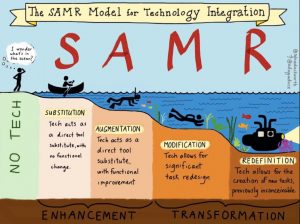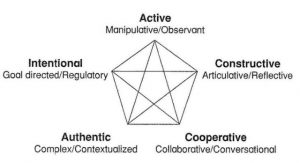Muffoletto (1994) argues that technology is “not a collection of machines and devices, but a way of acting.” As educators, if we are truly aiming to integrate technology as a means of supporting the diverse learning needs of our students, we must address the accompanying skills and attitudes that influence the ways in which our students engage with technology.
Through developing technology enhanced learning experiences, educators should focus their task design, and their corresponding assessments, on creating learning opportunities which emphasize designing (creating things, not just using or interacting with things), personalizing (creating things that are personally meaningful and relevant), collaborating (working with others on creations), and reflecting (reviewing and rethinking one’s creative practices). In order to create a more integrative approach to technology, the shift in approaches to assessment requires an exploration at a fundamental level. Bates’ SECTIONS framework (2014) states that assessment should also be influenced by the knowledge and skills that students need in a digital age, which means focusing as much on assessing skills as knowledge of content. In turn, this encourages the development of authentic skills that require understanding of content, knowledge management, problem solving, collaborative learning, evaluation, creativity and practical outcomes.
References
Bates, J. (2014). Teaching in a digital age, Chapter 8. Retrieved from http://opentextbc.ca/teachinginadigitalage/
Muffoletto, R. (1994). Technology and restructuring education: Constructing a context. Educational Technology, 34(2), 24-28.

